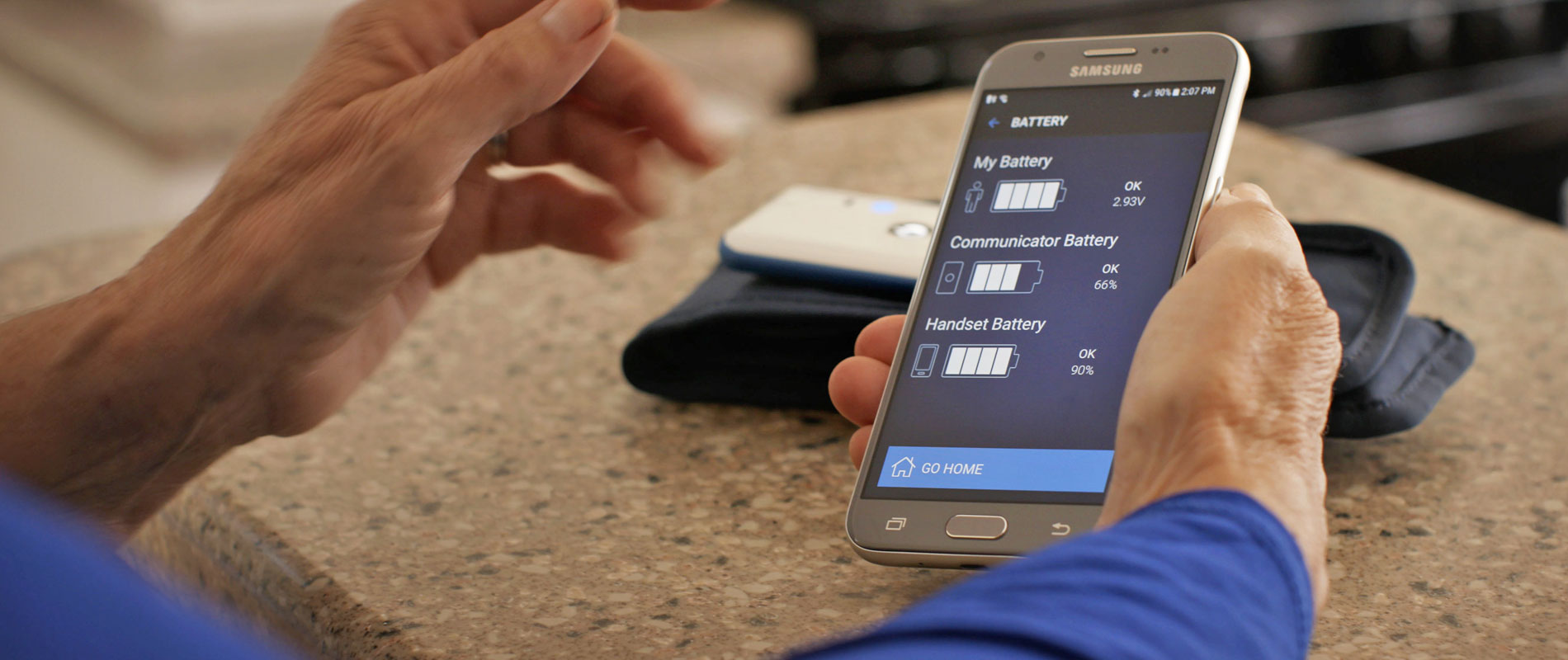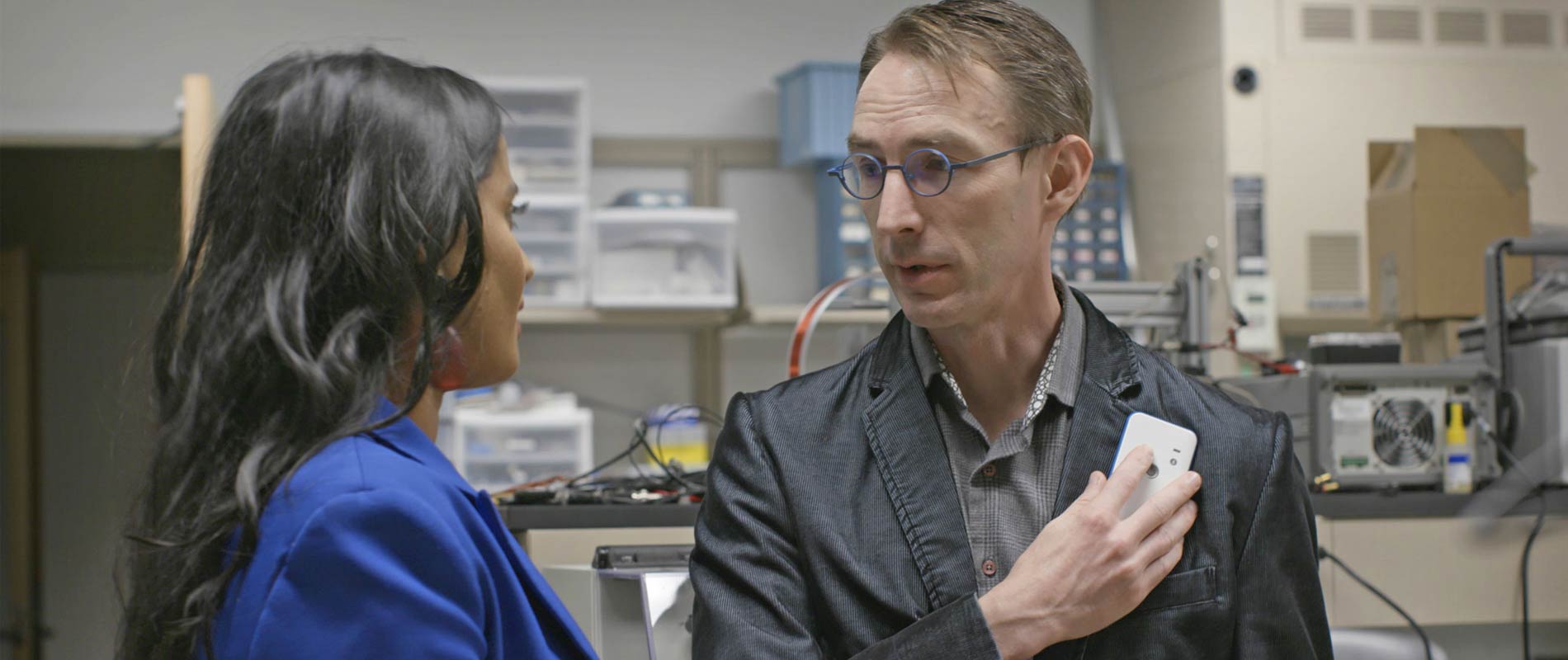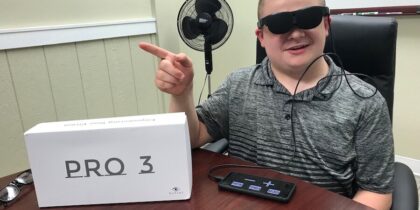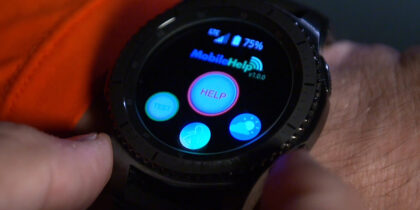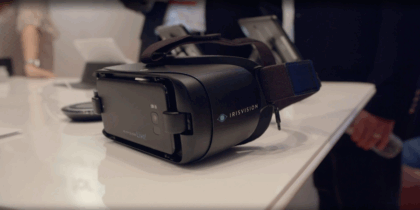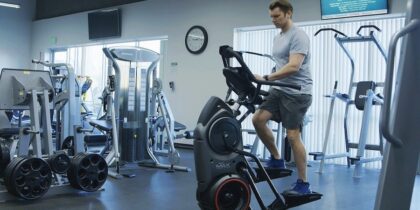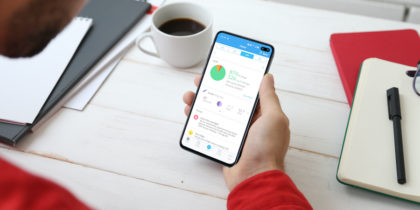
The Challenge
Nearly 1 million people in the United States live with Parkinson’s disease. Those with the condition often experience worsening tremors, reduced movement, body stiffness and cognitive changes, all of which may significantly impact their quality of life. Over 20 years ago, Medtronic partnered with visionary clinicians to develop Deep Brain Stimulation (DBS) technology to alleviate the symptoms of Parkinson’s. To help clinicians and patients better optimize the therapy, Medtronic sought user-friendly mobile devices to adjust the programming of DBS implants and to put more control into the patient’s hands.
The Solution
Medtronic’s legacy DBS programming devices provided limited functionality and did not support the company’s aspirations for digital health innovation. In collaboration with Samsung, Medtronic introduced a new Clinician Programmer in 2018, built around a custom-configured Galaxy tablet. The tablet connects to the DBS communicator via encrypted Bluetooth, ensuring security, safety and privacy of patient data. The preloaded Activa application allows physicians to review patient programming history and usage, visualize neuronal activation and optimize treatment through a more streamlined workflow.
The Results
Using the Samsung tablet-based Clinician Programmer has made DBS programming sessions much more effective for clinicians and patients. The intuitive interface, task-based workflow and large screen for visualizing information means physicians are armed with the data that shows the bigger picture of the patient’s condition. Following the success of the Clinician Programmer, Medtronic introduced a new Patient Programmer in October 2019, leveraging a Samsung smartphone that can be used by the patient to adjust their physician-prescribed DBS therapy between clinic consultations.

Medtronic, a global healthcare solutions company, is headquartered in Dublin, Ireland and operates in more than 150 countries. For 70 years, the company’s mission has been to alleviate pain, restore health and extend life for people around the world. The company’s 86,000 employees look to that mission as an ethical framework and inspirational goal as they use medical technologies, services and solutions to meet the needs of patients and healthcare professionals.
Healthcare faces many challenges, and Medtronic believes that many of those challenges can be solved with technology. The company is committed to partnering with others to improve and transform millions of lives each year through the use of its medical devices.
The Challenge
Giving Parkinson's Patients Greater Control of Their Treatment
Parkinson’s is a disease of the central nervous system that is caused when neurons in the midbrain begin to die and levels of dopamine decrease. It is characterized by tremors, muscle rigidity and slow movement, as well as cognitive changes. As a progressive condition, symptoms worsen over time.
Over the past two decades, deep brain stimulation (DBS) has been established as a safe and effective treatment for the reduction of Parkinsonian tremors. Medtronic has been an innovator in DBS treatment and its Activa implant system was the first rechargeable technology on the market globally.
The Medtronic DBS therapy system involves implanting a neurostimulator device in the pectoral area of the patient’s chest. Thin wires, called leads, extend from the neurostimulator to the brain to deliver electrical signals. Those electrical signals help reduce movement symptoms associated with Parkinson’s disease.
One Patient’s Story*
Susan Mollohan, a former high school administrator in Derry, NH, was diagnosed with Parkinson’s in 2008. Prior to receiving surgery for DBS, she describes Parkinson’s as a “living death.” “You are still living but you’re watching things die off,” she says. “I had to give up my job — that’s something that died off. My hand would be rigid up against my abdomen and my fingers were like a claw.”
After receiving DBS therapy, Mollohan found her Parkinsonian tremors were greatly reduced and her movements freer. “I have taken up the hobbies of photography, painting and drawing,” says Mollohan. “Deep brain stimulation surgery has given me my life back.”
“It’s pretty stunning what DBS can do for people suffering from tremors,” explains Anna Brenckman, principal marketing manager for deep brain stimulation at Medtronic. “People are able to reclaim their lives as a result of this therapy.”
The DBS therapy improves quality of life for patients with Parkinson’s disease. However, Medtronic sought to help physicians by making the implant programming process easier and help patients by putting more control over the physician-prescribed therapy into their hands. The company wanted user-friendly devices for both physicians and patients. And, for patients, they also hoped to find a device that allowed treatment to be more discreet.
* The patient quotes recount the experience of an individual who is receiving Medtronic DBS Therapy. Not everyone who receives this therapy will experience the same results. Some people may experience significant symptom relief from DBS Therapy, and others may experience minimal relief. Patients should talk to their doctor to find out if Medtronic DBS Therapy is right for them.
The Solution
User-Friendly Devices That Simplify DBS Programming for Physicians and Patients
In collaboration with Samsung, Medtronic introduced a new Clinician Programmer for DBS in 2018, built around a custom-configured Galaxy tablet and new Activa workflow application.
After the implant surgery is complete, physicians initiate programming and meet regularly with DBS patients to optimize neurostimulator program settings. Previously, the programmer device used had a limited interface and black-and-white screen and did not provide visualizations or summarize patient data.
Now, the programming sessions are managed using the Samsung Galaxy tablet and Activa app, providing access to richer information and a more streamlined workflow. The Clinician Programmer tablet connects to the DBS communicator via encrypted Bluetooth, ensuring security, safety and privacy of patient data. The tablet also features Samsung’s defense-grade Knox security platform, which protects the integrity of the device right down to the chip. With the preloaded Activa application, the physician can review previous programming history and patient therapy use between clinic consultations. The application also provides a visualization of the volume of neuronal activation on the tablet’s large, high-contrast screen.
The success of, and positive feedback on, the Clinician Programmer led Medtronic to launch a Patient Programmer in October 2019. This newly introduced device is built around a customized Samsung smartphone and preloaded application that allows patients to monitor and optimize their physician-prescribed DBS treatment between clinic consultations.
From a patient’s perspective, the previous patient programmer device was clunky, and its use was not intuitive. Additionally, the patient device was unusual in appearance and, if used publicly, drew attention to the user, often prompting invasive questions from observers.
The new Patient Programmer was designed to simplify and personalize the patient experience. Patients can continue to adjust their DBS therapy within parameters set by their doctor. In some cases, patients can choose to change physician-prescribed programs based on the activity they are engaging in. For example, one stimulation program may be more useful when motor skills are required, while another may be more helpful to make speech and conversation clearer. In addition, the Patient Programmer allows the patient to monitor the battery life of their implant.
The Results
Greater Control, More Capabilities and the Ability to Manage Treatment Discreetly
Introducing the Galaxy tablet-based Clinician Programmer has made programming sessions much more effective for clinicians and patients, says Brenckman.
With the intuitive touchscreen interface, clinicians can make the most of their time with the patient, following a task-based workflow to optimize the DBS programming. The new tablet-based application makes it easier for physicians to review patient information, arming them with data that shows the bigger picture in the patient’s condition. Charts and graphs help clinicians visualize the settings and effect of the implant on the patient. Additionally, the application allows clinicians to transfer programming from one treatment session to the next for greater efficiency.
The new Patient Programmer provides many of these same benefits to the patient, allowing them to better optimize their physician-prescribed therapy between clinic consultations. Additionally, the mobile devices are discrete and less noticeable by others. “The familiar look and feel of the Samsung smartphone programmer means they don’t have to explain their condition when they take it out,” says David T. Young, director of external communications for the Restorative Therapies Group at Medtronic.
The Samsung smartphone programmer also provides a level of comfort and familiarity. “For patients, getting a new therapy like DBS can be intimidating. Having that user-friendly Samsung interface makes them feel more empowered and involved with their therapy,” explains Brenckman.
Another important benefit of the new Galaxy smartphone-based Patient Programmer is the ability to change language used in the application. The previous patient device had limited screen real estate, and its display options relied on various icons for programmer navigation, which could sometimes be confusing. Now patients can choose from 36 available language options for their preferred language, making use easier and more intuitive.
Medtronic believes the new smartphone-based devices will pave the way for future digital health innovation programs. Those programs will be designed to improve therapies and provide patients with clear information for managing their conditions. “The partnership between Samsung and Medtronic is just starting to open the doors for the future of digital health,” explains Brenckman. “With the flexibility of the platform, we see the opportunity to add to patient education and approach condition management as a complete journey.”
